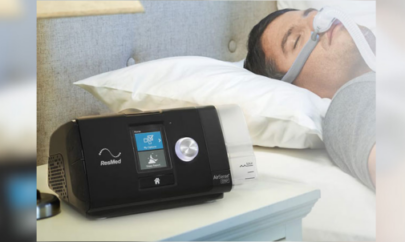
RemZzzs CPAP Liners: A Review
Many with obstructive sleep apnea rely on Continuous Positive Airway Pressure devices to ensure a good night’s sleep. CPAP machines vary in size and complexity but all perform the same basic function: delivering pressurized air to keep the air passages clear during sleep.
CPAP machines use a motor to draw in air– which is then passed through a tubing system to a mask worn over the face or nose.
Problems, however, can arise from contact between the mask and the skin on the face – and this is where a mask liner can be of benefit.
The Beauty of RemZzzs CPAP Liners
RemZzzs® mask liners will help you feel more comfortable in your face mask. Their patented design acts as a barrier between the skin of your face and the silicone of your mask’s cushion – virtually eliminating all of the most common problems associated with wearing a CPAP mask.
The RemZzzs liners are very comfortable – and have even more benefits:
- Promote healing of suspected deep tissue injury, stage I and 2 pressure sores, with intact skin.
- Greatly reduce or eliminate noisy and annoying air leaks.
- Prevent skin irritations and ugly pressure marks.
- Help absorb facial moisture and oils.
- Assist with comfortably holding your mask in place.
- Allow for the use of bedtime facial products.
- Promote a comfortable, full night of sleep… for you and your partner!
Let’s look more deeply at CPAP masks – and why mask liners are an integral part of your routine.
What Are Mask Liners?
Face masks are usually constructed from plastic or silicone and these substances can be hard on the skin as well as being somewhat irritating and uncomfortable.
They can also tend to slip out of position during sleep which can dramatically reduce the effectiveness of CPAP therapy.
To overcome this, researchers developed the idea of introducing a soft barrier between the mask and skin that would reduce (if not totally eliminate) the problems of irritation, displacement and discomfort. The result is mask liners which are made of soft material and sit directly under the face or nose mask.
As there are several types of face masks available it is important to choose a mask liner that will fit the mask snugly and securely. The three main types of masks available to OSA patients are:
- Nasal
- Nasal Pillow
- Full Face
Mask Problems
Masks come in two basic designs. The first simply covers the nose and the second encases the nose and mouth. In order to function correctly and effectively, the masks should fit very snugly to achieve an airtight seal.
This means the silicone mask is in tight contact with the skin during sleep and this can lead to problems including:
- Damage to facial tissue
- Pressure marks and sores
- Skin irritation
- Possible blisters
In addition to these issues, masks can slip during sleep and allow air to leak out around the mask edge which reduces the effectiveness of therapy as well as being uncomfortable and disrupting sleep.
Liner Solution
Mask liners are not a necessary component of a CPAP device but they can certainly be a worthwhile addition if facial or nasal masks are causing difficulties. Liners are made from a soft and smooth fabric which is much gentler on the skin than silicone or plastic.
The softness of a mask liner means it can:
- Reduce the likelihood of skin irritation
- Assist in holding the mask in the correct position
- Help eliminate any air leakage
- Prevent pressure marks and sores
- Absorb facial oils and grease which can corrode the silicone mask
Another plus is the fact that mask liners allow you to use facial products at bedtime as the liner provides a barrier between the facial application and the mask, thus preventing damage to the mask itself.
Liners also make wearing a mask a more comfortable experience, which will help in achieving the desired outcome of good, quality sleep.
Long-Term Benefits
Apart from the immediate beneficial effects of using a mask liner – such as better quality sleep and reduced risk of skin irritation – there are also longer-term benefits:
Reduced wrinkling. Long-term use of CPAP devices can produce wrinkling of the skin. This is because the mask exerts pressure on the skin and pulls it out of its normal position which can lead to premature wrinkles. A liner significantly reduces the pressure exerted and the pulling effect of the mask.
Combats allergies. OSA sufferers with allergies can have an adverse reaction to the plastic mask and this can result in rashes, blisters and sores around the mask area. Using a liner to prevent contact with the mask will prevent any such issues from occurring.
Avoids moisture build-up. It is quite common for moisture to accumulate in a face mask as the exhaled air has nowhere to go and turns into droplets of water.
The soft material of a mask liner is designed to absorb this excess moisture, without breaking the seal between the skin and the mask, helping the CPAP device to continue operating at its optimum best.
Without doubt, the biggest long-term benefit of a mask liner is the comfort it provides. As anyone with obstructive sleep apnea will attest, the sole purpose of CPAP therapy is to ensure the best quality sleep possible.
If a mask liner can help achieve better quality sleep, then it must be regarded as a valuable and worthwhile accessory in combating the effects of obstructive sleep apnea!
Sources:








